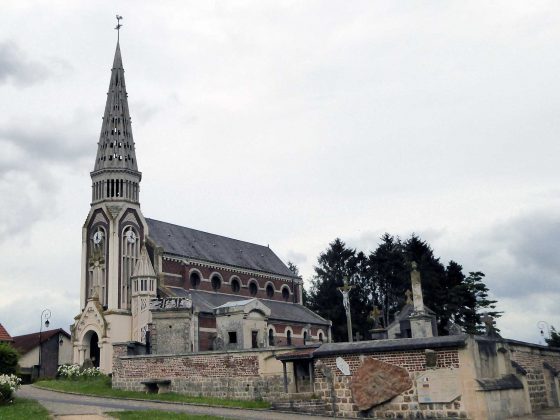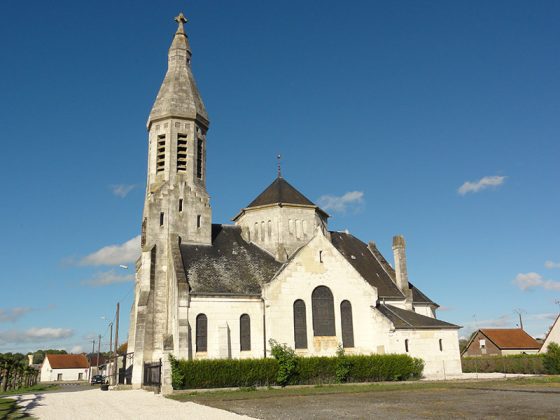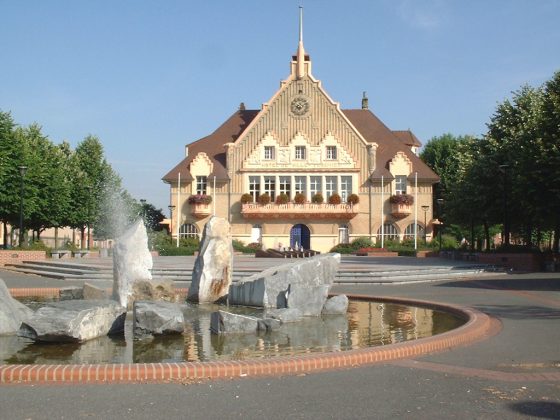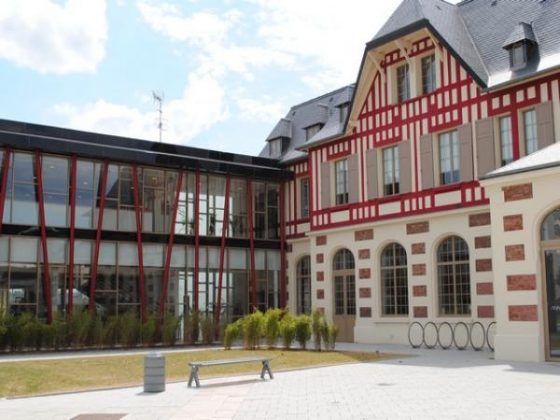VFF15 - From Seraucourt Le Grand to Tergnier
VFF15 - From Seraucourt Le Grand to Tergnier
Gps Track
- Total Length: 19,5 km
- Difficulty by Foot: Easy
You will quickly reach Clastres, where you can see the light-colored Saint-Sulpice church, made of bricks and concrete, a former public well, and a fringe of wind turbines on the horizon. In Montescourt-Lizerolles, the red neo-Gothic church is imposing.
The town owes its name to Montih, German lord who would have lived on these lands. In Mennessis is a memorial of the victims of the 32nd Infantry Regiment. A metal bridge spans the canal. Liez is a village that was destroyed in 1917 and rebuilt in 1925-1928. Its church has two octagonal towers of different dimensions. You will end up in Tergnier, where Art Deco is omnipresent. Its most representative examples are Place Carnégie (listed as a historical monument), the Hôtel de Ville and the Fargniers church. The media library, former buffet of the station, is a site that became historical by the arrival of Victor Hugo in 1870 who took his first meal on French soil there when he returned from exile. The bell tower of the Veltin school, visible from the Rue de la Famille Sauvage (Quessy-Cité), still indicates the time of the bombing that ravaged the city during the night of April 10th to 11th 1944. Seven tourist signs, located in the city to constitute the Trails of the Memory, trace facts of war or resistance during the second world war which took place on the territory. The site is under construction, you can find information on the itinerary on the official website of the French Federation of Hiking in your area, region Hauts-de-France.
- VFF47 – From Pontarlier à Jougne historic route
- VFF47bis – Variant from Pontarlier to L’Auberson/Sainte Croix
- VFF46 – From Mouthier Haute Pierre to Pontarlier
- VFF45 – From Foucherans to Mouthier-Haute-Pierre
- VFF44 – From Besançon to Foucherans
- VFF43 – From Cussey sur l’Ognon to Besançon (Pont Battant)
- VFF42 – From Bucey les Gy to Cussey sur l’Ognon
- VFF41 – From Dampierre sur Salon to Bucey les Gy
- VFF40 – From Champlitte to Dampierre sur Salon
- VFF18 – From Corbeny to Berry Au Bac
- VFF17 – From Laon to Corbeny
- VFF16 – From Tergnier to Laon
- VFF14 – From Trefcon to Seraucourt Le Grand
- VFF13 – From Peronne to Trefcon
- VFF12 – From Bapaume to Peronne
- VFF11 – From Arras to Bapaume
- VFF10 – From Ablain Saint Nazaire to Arras
- VFF09 – From Bruay La Brussiere to Ablain Saint Nazaire
- VFF08 – From Amettes to Bruay La Brussiere
- VFF07 – From Thérouanne to Amettes
- VFF06 – From Wisques to Thérouanne
- VFF05 – From Tournehem-sur-la-Hem to Wisques
- VFF04 – From Licques to Tournehem-sur-la-Hem
- VFF03 – From Guines to Licques
- VFF02 – From Wissant to Guines
- VFF01 – From Calais to Wissant
- VFF39 – From Coublanc to Champlitte
- VFF38 – From Culmont-Chalindrey to Coublanc
- VFF37 – From Langres to Culmont-Chalindrey
- VFF36 – From Faverolles to Langres
- VFF35 – From Richebourg to Faverolles
- VFF34 – From Orges to Richebourg
- VFF33 – From Baroville to Orges
- VFF32 – From Dolancourt to Baroville
- VFF31 – From Dienville to Dolancourt
- VFF30 – From Précy-Saint-Martin to Dienville
- VFF29 – From Montmorency-Beaufort to Précy Saint Martin
- VFF28 – From Outine to Montmorency-Beaufort
- VFF27 – From Saint-Rémy-en-Bouzemont to Outines
- VFF26 – From Vitry-le-François to Saint-Rémy-en-Bouzemont
- VFF25 – From Saint-Amand sur Fion to Vitry le François
- VFF24 – From Saint-Germain la Ville to Saint-Amand sur Fion
- VFF23 – From Châlons en Champagne to St-Germain-la-Ville
- VFF22 – From Condé sur Marne to Châlons en Champagne
- VFF21 – From Verzy to Condé sur Marne
- VFF20 – From Reims to Verzy
- VFF19 – From Berry au Bac to Reims






